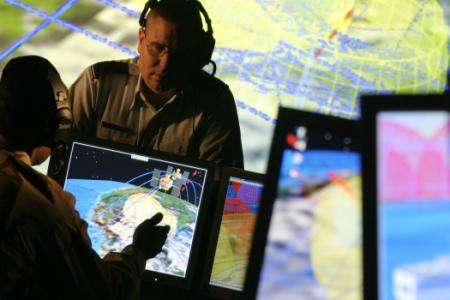Customer
A global defense, security and aerospace company providing advanced electronics, security, and information systems.
Challenge
Design and build a large-scale application to support the management of real-time training scripts that emulate the network traffic between multiple primary and secondary surveillance radar systems and associated Command and Control (C2) Systems for the purpose of training C2 system operators.
Solution
Bloomy produced custom applications for training script generation and execution as well as exercise management. The script generator produces sequences of time-based events, including the launch of ballistic missiles. The exercise manager processes the sequences and transmits the appropriate data packets required to emulate the real-time behavior of various tracking systems’ hardware components. The exercise manager also responds to real-time events generated by the trainees operating the actual C2 equipment.
By taking advantage of the inherent parallelism in LabVIEW, the numerous TCP/IP, UDP, and Serial network connections were efficiently managed. The built-in queuing functionally made it easy to handle burst situations when training scenarios were pushing the network to capacity.
Features
- Tactical ballistic missile (TBM) track creation
- Land based defense system emulators which simulate tracking, targeting and destruction of TBMs
- Interacts with C2 system using Tactical Digital Information Link 16 (TADIL-J) track, status and tasking messages
- Supports multiple radar detection algorithms and rules including disabled and blanked regions
- Surface ship and airplane tracking support
- Scenario playback feature for launch sequence analysis
- Secondary surveillance radar (SSR) support for airplane detection using multiple identification, friend or foe (IFF) modes
Results
Bloomy was able to deliver a training solution that provided more custom functionality at a much lower cost than commercially available solutions. The flexible software architecture enabled requirements changes detected during system integration and test to be incorporated seamlessly and rapidly. The resulting software exceeded expectations and proved to be not only an exceptional training tool but a system test tool used to verify and validate system components. Overall, it provided the functionality and performance required to meet the training demands of the military end-user.

